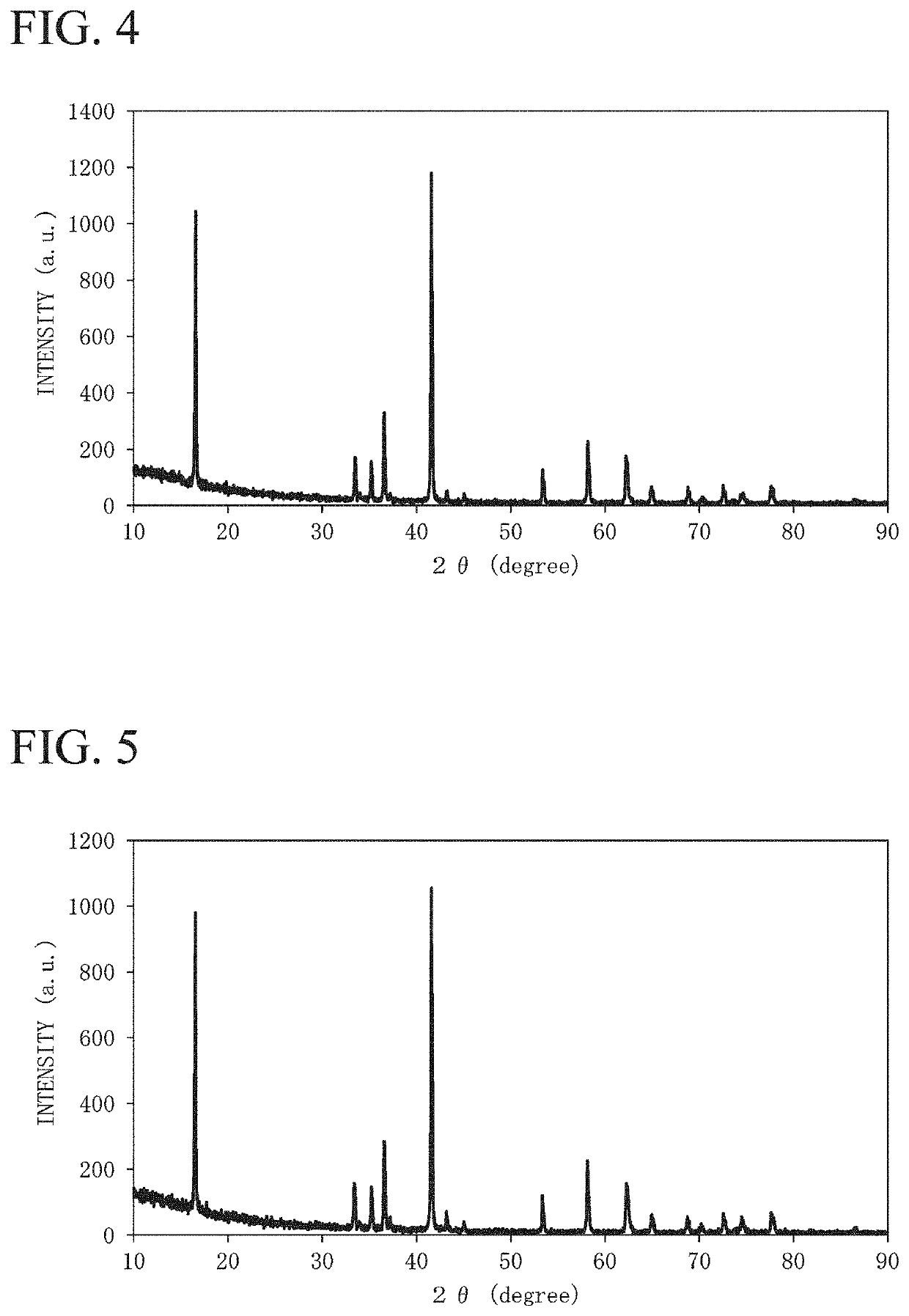Electrode active material for sodium secondary battery, electrode for sodium secondary battery, sodium secondary battery and method for producing composite metal oxide
- Summary
- Abstract
- Description
- Claims
- Application Information
AI Technical Summary
Benefits of technology
Problems solved by technology
Method used
Image
Examples
example 1
[0191]An agate mortar was charged with 143.1 mg of silica (SiO2), sodium carbonate (Na2CO3), calcium hydroxide (Ca(OH)2), manganese (IV) oxide (MnO2), iron (II, III) oxide (Fe3O4), and nickel (II) oxide (NiO) were used as a metal-containing compound, 15.3 g of the compound in total was weighed such that the molar ratio of Na:Ca:Mn:Fe:Ni was set to 0.99:0.02:0.31:0.41:0.28, and the agate mortar was charged with the compound and dry-mixed to obtain a mixture. An alumina crucible was filled with the obtained mixture and heated in the air atmosphere using an electric furnace, the state was held at 900° C. for 12 hours, and the mixture was calcined and cooled to room temperature, thereby obtaining an electrode active material 1. The electrode active material 1 was dissolved in hydrochloric acid, and the composition was analyzed based on ICP emission analysis. As the result, the molar ratio between the dissolved components (Na:Ca:Mn:Fe:Ni:Si) was 0.98:0.02:0.30:0.41:0.28:0.01 (Na0.98Ca0.0...
example 2
[0193]An agate mortar was charged with 214.7 mg of silica (SiO2), sodium carbonate (Na2CO3), calcium hydroxide (Ca(OH)2), manganese (IV) oxide (MnO2), iron (II, III) oxide (Fe3O4), and nickel (II) oxide (NiO) were used as a metal-containing compound, 15.3 g of the compound in total was weighed such that the molar ratio of Na:Ca:Mn:Fe:Ni was set to 0.99:0.02:0.31:0.41:0.28, and the agate mortar was charged with the compound and dry-mixed to obtain a mixture. An alumina crucible was filled with the obtained mixture and heated in the air atmosphere using an electric furnace, the state was held at 900° C. for 12 hours, and the mixture was calcined and cooled to room temperature, thereby obtaining an electrode active material 2. The electrode active material 2 was dissolved in hydrochloric acid, and the composition was analyzed based on ICP emission analysis. As the result, the molar ratio between the dissolved components (Na:Ca:Mn:Fe:Ni:Si) was 0.97:0.02:0.30:0.40:0.27:0.02 (Na0.97Ca0.0...
example 3
[0195]An agate mortar was charged with 286.6 mg of silica (SiO2), sodium carbonate (Na2CO3), calcium hydroxide (Ca(OH)2), manganese (IV) oxide (MnO2), iron (II, III) oxide (Fe3O4), and nickel (II) oxide (NiO) were used as a metal-containing compound, 15.3 g of the compound in total was weighed such that the molar ratio of Na:Ca:Mn:Fe:Ni was set to 0.99:0.02:0.31:0.41:0.28, and the agate mortar was charged with the compound and dry-mixed to obtain a mixture. An alumina crucible was filled with the obtained mixture and heated in the air atmosphere using an electric furnace, the state was held at 900° C. for 12 hours, and the mixture was calcined and cooled to room temperature, thereby obtaining an electrode active material 3. The electrode active material 3 was dissolved in hydrochloric acid, and the composition was analyzed based on ICP emission analysis. As the result, the molar ratio between the dissolved components (Na:Ca:Mn:Fe:Ni:Si) was 0.98:0.02:0.30:0.41:0.28:0.02 (Na0.98Ca0.0...
PUM
 Login to view more
Login to view more Abstract
Description
Claims
Application Information
 Login to view more
Login to view more - R&D Engineer
- R&D Manager
- IP Professional
- Industry Leading Data Capabilities
- Powerful AI technology
- Patent DNA Extraction
Browse by: Latest US Patents, China's latest patents, Technical Efficacy Thesaurus, Application Domain, Technology Topic.
© 2024 PatSnap. All rights reserved.Legal|Privacy policy|Modern Slavery Act Transparency Statement|Sitemap



